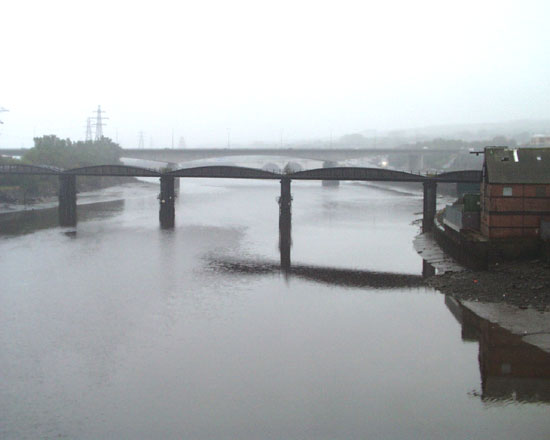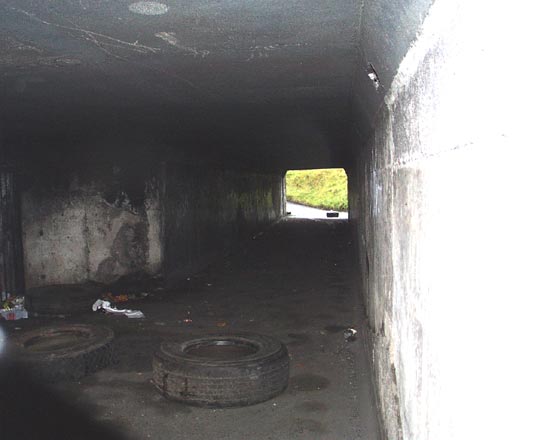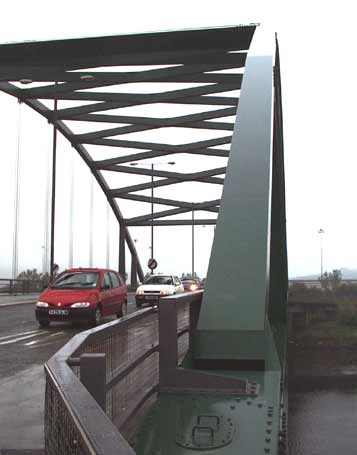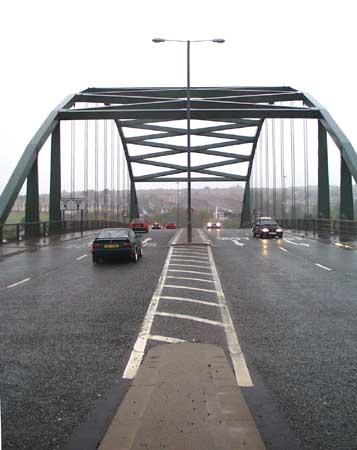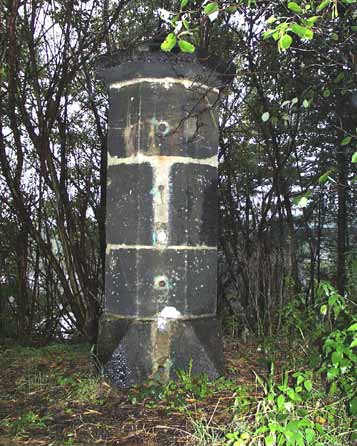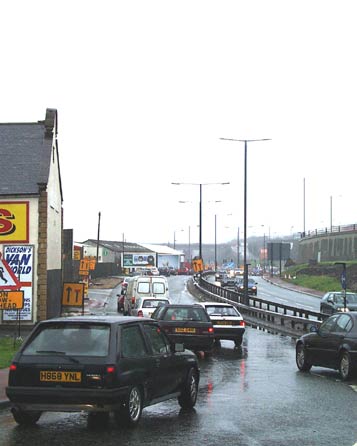|
A Box of Girders
Sun. 21st Oct., 2001
|
|
Replacing an earlier western crossing, Scotswood Bridge was started in 1964 and was opened on 20th March, 1967.
It was built to a then new box girder design. Those curved ribs were tied by steel cables that were subject to
corrosion. These were replaced with tie bars. The pedestrian subways flooded in moderate rain, and following some fatal collapses in other bridges of this type in Wales, Germany, and Australia it was
restricted to single file for 2½ years from June 1971. £440,000 worth of work was carried out to strengthen it, almost 25% of the original cost to build only 5 years earlier. |
 |
|
|
|
|
 |
No sooner had these emergency repairs been completed than more work was required causing mighty delays between 1979
and 1980. More money was spent and more delays happened in 1983 and the final insult was when the whole thing was shut for several months in 1990.
For as long ago as 1900 the original chain bridge was
considered inadequate, and it seems that the replacement was ill thought out and poorly executed. If it was conceived as an inexpensive solution then Alderman Peter Renwick and his cronies of the Scotswood
Bridge Joint Committee should be called upon to meet the real cost. It was originally supposed to have six lanes, but even this was cut to save money. |
|
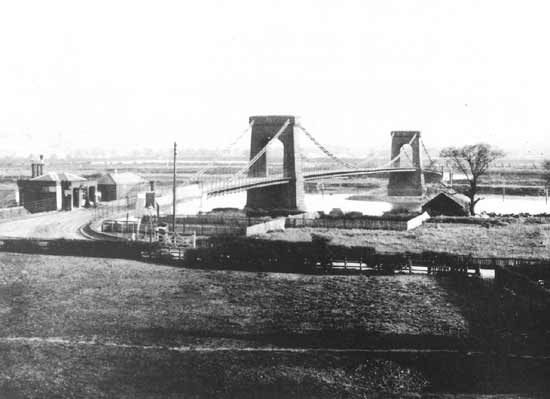 |
|
© Newcastle upon Tyne City Library |
 |
|
The 1890s photo above shows the original chain bridge, opened on 16th April 1831. It maintained continuous use
until closing day in March 1967. I think this was good value for the eventual cost of £15,000 (£825,000 or $1m in today's terms). The biggest drawback was its narrow roadway; just room for careful two way
traffic. From opening day it was jammed by traffic.
The money was raised by forming a Bridge Stock Company, charging tolls on those using the crossing. Newcastle Corporation bought the Company and in
March 1907 tolls were lifted.
To the right is a reminder on the Newcastle side; one of the original toll gateposts remains in position. |
|
|
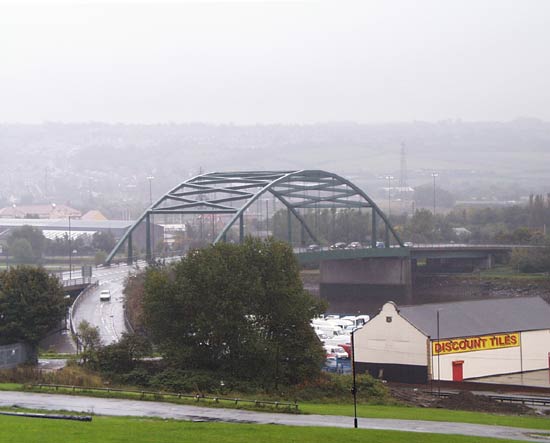 |
|
From a similar viewpoint from that old photograph the new bridge is large by comparison. It was built 92 metres west of the old
one, its left hand edge being where that barn gable end and tree are visible on the right of the old picture. Sweeping new roads were required and a rather small roundabout was incorporated on the northern side. The
Discount Tiles building is on the site of the previously long established "Adamsez" porcelain factory, that churned out toilet bowls for over a century. |
 |
© Newcastle upon Tyne City Library |
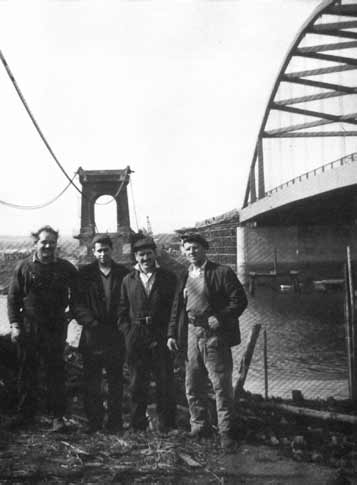 |
|
 |
 |
|
Pictured in 1967, these four workers take time off from construction work to pose for Jimmy Forsyth. In the
background the narrow chain bridge is almost dismantled while the new crossing nears completion.
Scotswood Bridge was designed by Mott Hay and Anderson and erected by a consortium of Mitchell
Construction, and Kinnear Moody Group Ltd, with Dorman Long fabricating and erecting the steelwork.
The bridge not only supports vehicles and pedestrians, but also carries electric power cables,
telephone links, gas and water mains, and sewer pipes. |
|
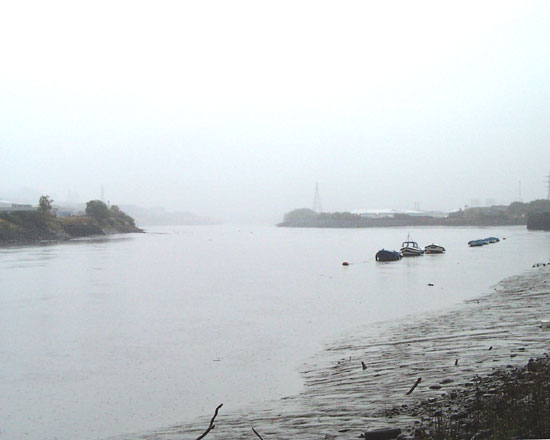 |
|
October is a month noted for mists and mellow fruitfulness, here in the United Kingdom. For me it is the month of the Black
Dog; first named as such by Winston Churchill, but suffered by humans in all eras. These two views of the river, above eastward and below westward. The latter shows the rail bridge abandoned since 1982, the new A1 trunk
road bridge opened in 1990, and the distant arches of the new Newburn Industry Park, not actually in Newburn but on reclaimed land at Bell's Close on the old Lemington Gut. |
|
Two evocative views of the labyrinth that threads beneath the Newcastle side approach roads. Large tyres have been placed to
obstruct motorcycling juveniles. I don't know why, as these passageways have long since ceased to be used by pedestrians. The local Council have abandoned hope and they are no longer illuminated. People on foot cross
the roads by other means, sometimes dicing with death on the carriageways above. |
 |
 |
|
To the north of the Newcastle end of the bridge is the site of Scotswood Railway Station. Here is the entrance to the north of
the tracks. That bulge in the wall supporting the bridge marks the end of the platform, there is a similar arrangement on the other side. A photograph by P. Bailey during operational days can be seen here
. |
|
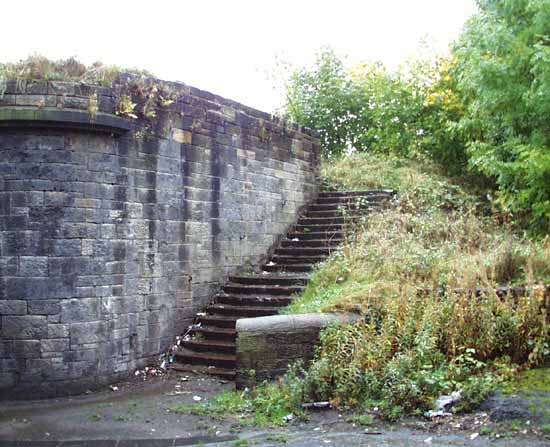 |
|
|
 |
 |
|
The approach road from the north dips under the branch line to Lemington and Newburn. Trains on the southern branch
travelled over the river towards Blaydon, joined the line from Gateshead, and thence to Carlisle and the London Glasgow line.
During the 1950s the then Tory government pursued its relentless hatred of
services for the people in favour of great riches for its Business friends. Part of this policy was the appointment of the now infamous Dr. Beeching. He was given the brief of making the railways pay. This he attempted by wholesale closures of the system. He was not successful in economic terms, but his closure
plan spelt the end for a once ubiquitous network. |
|
|
Since Dr. Beeching's
day car use has spiralled, some say out of control. How much of that gigantic leap in road traffic is due to his actions can only be speculation: that it is a consequence is beyond doubt.
It is clear
that governments, both national and local, have a long history of infrastructure and planning blunders. Often the hidden agenda is vested interest, the "old boy" network, and a gross neglect of social issues
and the needs of the population. The fact that we pay their wages and provide their positions by our votes only comes into focus for a few weeks during elections when ordinary business is suspended. |
|
 |
 |
|
Site and contents (unless otherwise stated) © Tim. Pickford-Jones and Timmonet, Newcastle upon Tyne,
United Kingdom. |
|
 |
|
|
 |
|
If you should arrive here via a search, or be missing the navigation on the left hand side, click this button.
|
|




